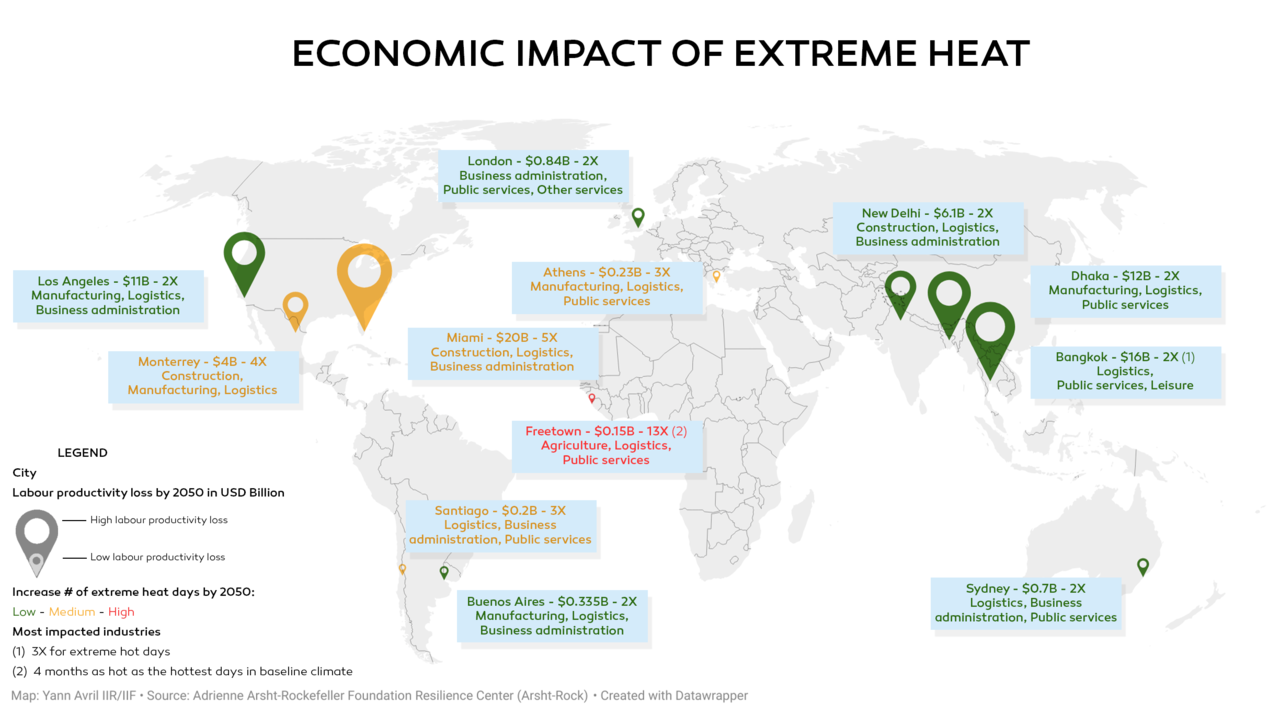Extreme heat reduces productivity in global economies
In a recent report, a non-profit organisation examined how global warming is affecting the economy and labour productivity in 12 major urban areas worldwide.
Air conditioning plays a key role in the economic and social development of warmer countries and its use is expanding dramatically - especially in the world’s emerging economies - with rising global temperatures.[1] Globally, the International Labour Organisation points out that even in an effective climate change mitigation scenario, rising temperatures resulting from climate change will lead to the loss of the equivalent of 72 million full-time jobs by 2030 due to heat stress.[1]
In September 2022, the Adrienne Arsht-Rockefeller Foundation Resilience Center, a non-profit organisation, released a report on the social and economic effects of extreme heat in twelve cities worldwide.[2] The authors examined heat-related productivity losses and the effects on workers and identified key sectors of the economy affected by extreme heat.
Heat reduces labour productivity and workers’ incomes
Workers in hot conditions are more prone to mistakes and reduced decision-making capacity, which can lead to mistakes, work injuries or death. Heat can cause direct work interruptions or additional breaks to rest and rehydrate regularly. In an average year, losses from heat-related reductions in worker productivity totalled USD 44 billion across the twelve cities in 2020. If no action is taken, this amount will rise to USD 84 billion by 2050.
Cities in the southern hemisphere are more severely affected
Cities in the southern hemisphere tend to have hotter and more humid climates. With more labour-intensive economies and lower access to active cooling technologies, they are more vulnerable to heat. The study results showed that losses from worker productivity as a share of output were highest in low- or middle-income cities in Asia and Africa. Furthermore, as these cities expand rapidly, estimated losses are projected to increase fivefold in Freetown and to threefold in Buenos Aires.
How can cities reduce the impacts of heat?
According to the authors of the report, planning or policy can help mitigate the impact of heat. For instance, measures to enhance worker protection can limit working during very hot periods, or mandate cooling measures in building codes. Cities also need to invest in local cooling infrastructures such as cool pavements, roofs and walls, cooling centres, or public fountains, as well as nature-based solutions like tree planting campaigns.

(Click on the image for a larger view)
Sources
[1] The Role of Refrigeration in the Global Economy (2019), 38th Note on Refrigeration Technologies. https://iifiir.org/en/fridoc/the-role-of-refrigeration-in-the-global-economy-2019-142028
[2] Hot Cities, Chilled Economies. Impacts of Extreme Heat on Global Cities. https://onebillionresilient.org/hot-cities-chilled-economies/
[3] Hot Cities, Chilled Economies. Bangkok, Thailand. https://onebillionresilient.org/hot-cities-chilled-economies-bangkok/
[4] Hot Cities, Chilled Economies. New Delhi, India. https://onebillionresilient.org/hot-cities-chilled-economies-new-delhi/
